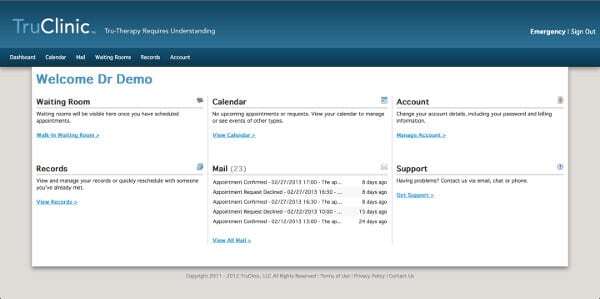Telehealth is one of these verticals where WebRTC startups are sprouting. Here’s the story of TruClinic.
Unified Communication and Video Conferencing traditionally did little for verticals. They may have added a feature here and there, certified their equipment, but that’s about it. Verticals need much more than just certifications – they require embedding communications within business processes. And I was missing an interview around those lines until today.

While I have seen several telehealth WebRTC solutions, TruClinic is one of the most “embedded” of them. They recently partnered with the Univeristy of Utah Healthcare, which brought them into my radar. I asked Justin Kahn, Founder and CEO of TruClinic a few questions. Here are his answers.
What is TruClinic all about?
Great question. TruClinic’s mission is telehealth for everyone. The only way mHealth technologies, especially secure video communications truly work is if they are available to anyone who would like to use them. Until now, these technologies have priced many providers and patients out of the market. With TruClinic, those barriers disappear. Our goal is simple: Provide simple, effective solutions that anyone in the healthcare industry can use to deliver meaningful care to their patients.

What excites you about working in WebRTC?
The possibilities are endless. WebRTC is a game changer. The paradigm is shifting away from hardware based video conferencing equipment to big ticket items, such as medical carts and surgical robots. WebRTC opens up new avenues of communications that have just become possible in the past few months. Given that it is supported strongly in the IT community, we are excited to be part of the cutting edge development and implementation of WebRTC.
What is different in providing a healthcare solution with WebRTC than other services?
Working in the healthcare industry means having to account for many factors. The space is dominated by the complexities of providing the network security, IT infrastructure, compliance, monitoring, tracking and reporting necessary to comply with the regulatory standards. In addition, the solutions have to be stable, scalable and very easy to use. The video communications component is only part of the solution for healthcare providers. In reality, the biggest hurdle to overcome is adaptability and versatility of the software when it comes to implementation and utilization.
Backend. What technologies and architecture are you using there?
We use multiple open source languages in a LAMP stack.
Where do you see WebRTC going in 2-5 years?
That’s hard to assess at this point. The first question is what are Microsoft and Apple going to do regarding WebRTC. Microsoft is signaling that they may introduce a codec in the next version of IE that will work with WebRTC. Apple has made no indication either way as of yet. Regardless of what the two companies decide to do, the genie is out of the bottle. More and more, the IT world is beginning to see what is possible with WebRTC.
If you had one piece of advice for those thinking of adopting WebRTC, what would it be?
If next generation web-based communications could enhance your business, it is definitely worth investigating what the technology could do for your bottom line.
Given the opportunity, what would you change in WebRTC?
We are constantly working to introduce new functions that can be overlaid on the WebRTC framework. Given that WebRTC is open source, the programming community will drive the technology into new frontiers. If anything, I’d like more programmers to continue to support and contribute to development.
What’s next for TruClinic?
Continued growth. The technology is now being used in North America and Europe. Any healthcare provider that wants to use TruClinic can have access to it for free. We have just begun an awareness campaign to show healthcare organizations and provider groups that all of the traditional barriers to entry are gone. TruClinic is a partner in helping our customers implement the technology and have it easily integrate into their workflow.
–
The interviews are intended to give different viewpoints than my own – you can read more WebRTC interviews.
